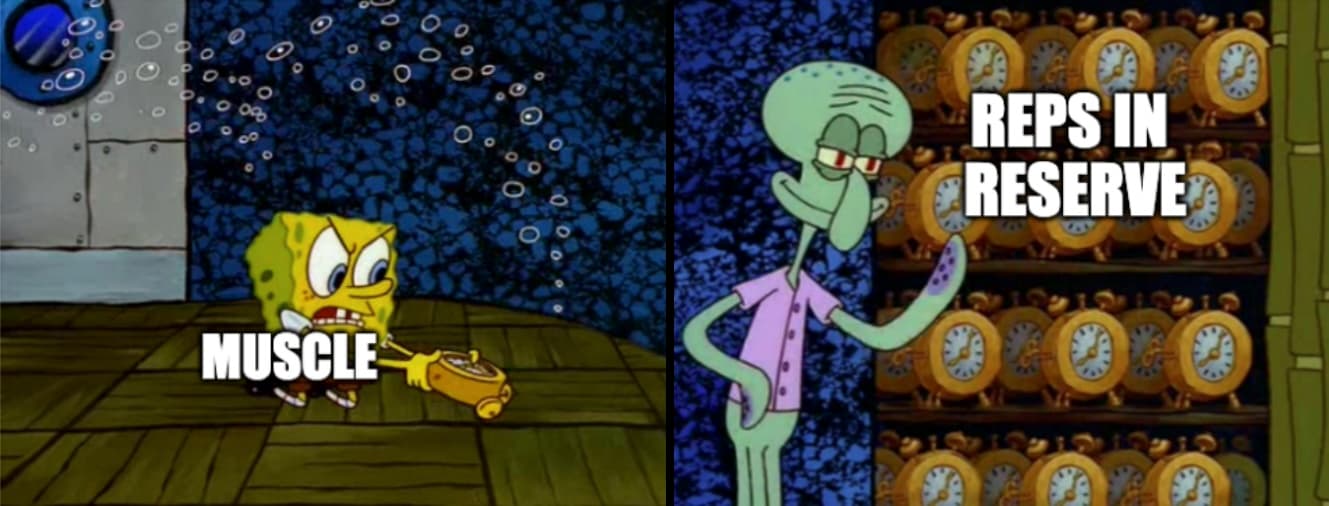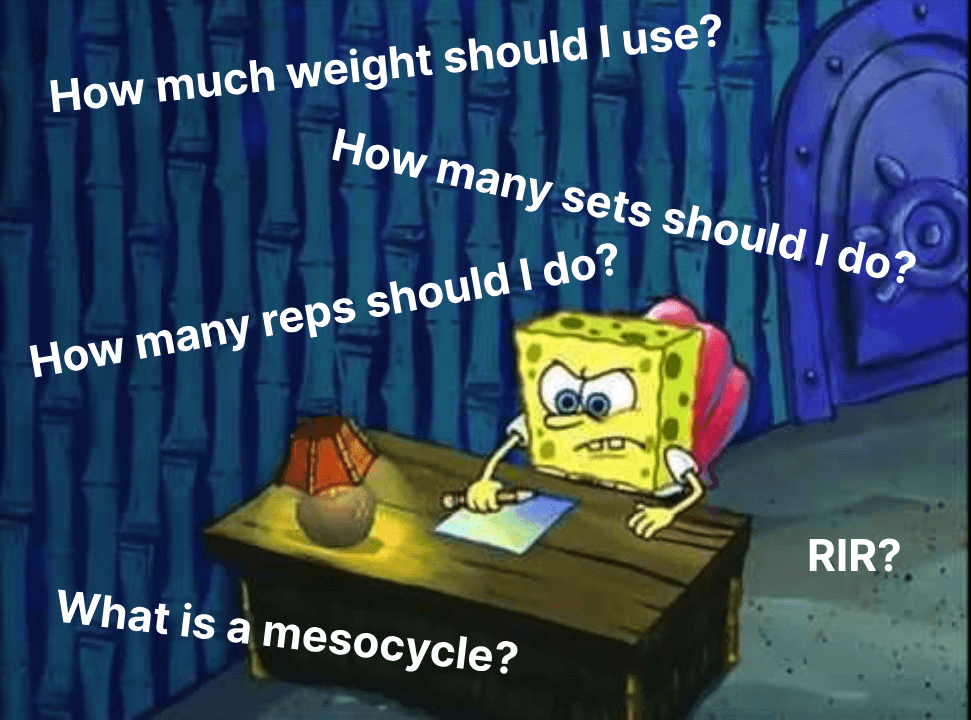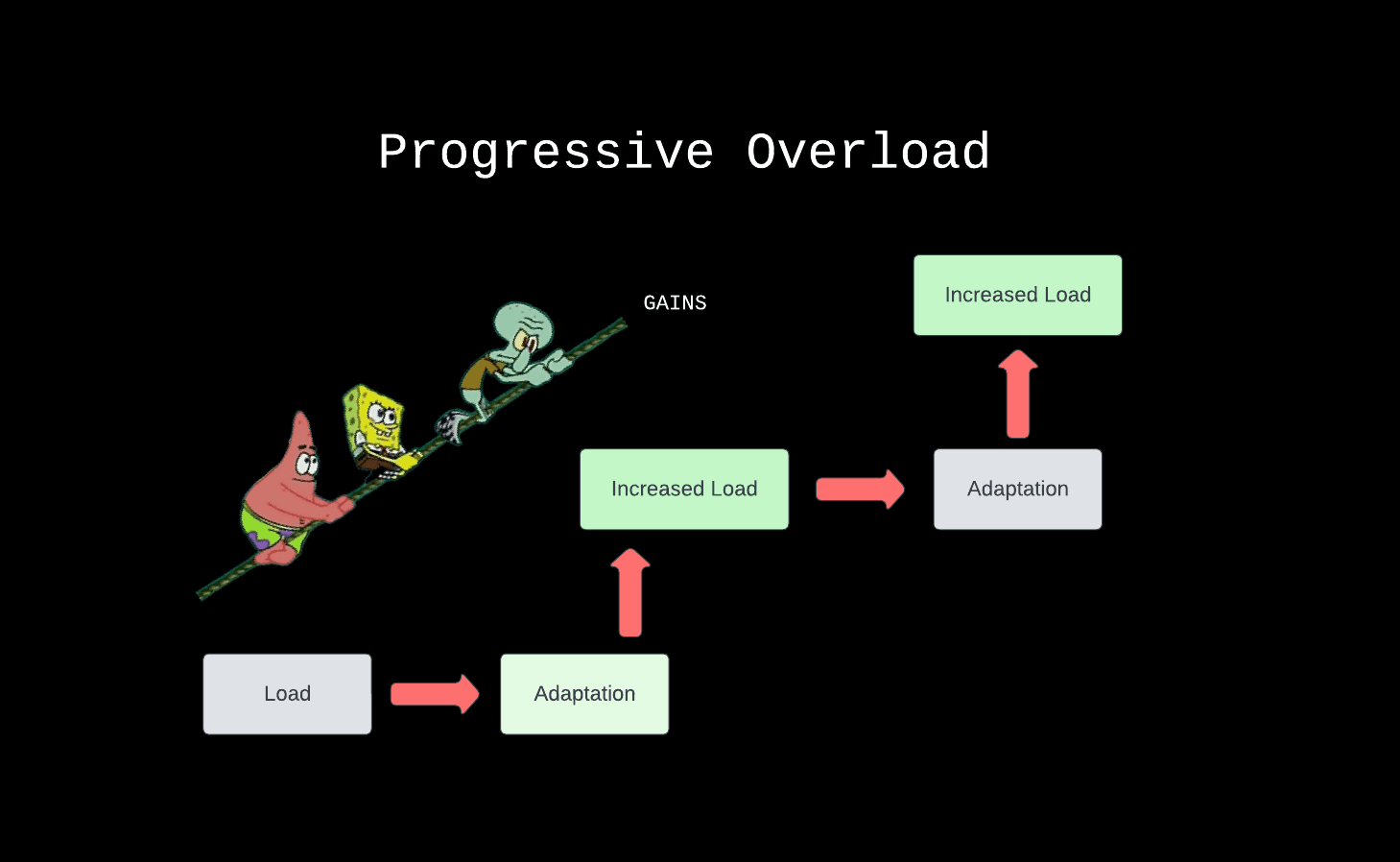Training Smarter using Reps in Reserve



Today, we're diving deep into a game-changing concept that'll revolutionize your workouts: Reps in Reserve (RIR).
What is RIR?
Simply put, it's the number of reps you could still do with good form after finishing a set. How many more reps could you do?
For example:
- 0 RIR: Couldn't lift that weight again if your life depended on it.
- 1 RIR: Could squeeze in 1 more rep.
- 2 RIR: Could do 2 more reps.
...etc.
Why RIR is Important
RIR might just be the most important feature of growth training. Why? Because it helps you:
-
Prevent Burnout: The name of the game here is an ideal stimulus-to-fatigue ratio. We want to sustainably stimulate our muscles, so we don't burn out and hinder recovery. Always training to failure is like redlining your car engine everywhere you go. Sure, it's intense, but it'll wear you out fast.
-
Boost Progress: By not going all-out every time, you give your body a chance to adapt and grow stronger. It's like learning a new skill - you practice regularly, not until you're exhausted every single time.
-
Injury Prevention: RIR helps you maintain good form, reducing the risk of injury. It's like carrying a cup of hot coffee - you're more likely to spill if you fill it to the brim.
-
Flexibility: RIR lets you adjust your training based on how you're feeling that day. Some days you're a superhero, others you're more... human. RIR accommodates both.
The Sweet Spot for Gains
Research shows that the best results come from:
- A wide rep range (5-30 reps)
- A wide volume range (3-12 sets per session)
- But a very narrow RIR range (4-0 RIR per set)
⚠️ This means you can play around with reps and weight, even volume, but hitting that RIR target is crucial for optimal gains.
RIR Over the Mesocycle
A mesocycle is a training cycle that focuses on developing a specific physical adaptation, such as endurance, hypertrophy, strength, etc. It typically lasts 4-6 weeks, and is part of a greater macrocycle.
Think of your training cycle like a story:
- RIRs of 3-4 are like the calm beginning - decently effective, but very low in fatigue.
- RIRs of 0 are the climax - very effective, but boy, do they wear you out!
- An RIR of 2 is our "just right" - the best average for a hypertrophy mesocycle.
But here's a pro tip: Start at 3-4 RIR and gradually make training tougher until you hit 0 RIR. This way, your mesocycle lasts longer, you still average 2 RIR, and you get the best of both worlds - the easy gains of higher RIR and the peak gains of 0 RIR, without burning out.
A sample 5-week mesocycle might look like this:
Week 1: 3 RIR
Week 2: 2 RIR
Week 3: 1 RIR
Week 4: 0 RIR
Week 5: Deload
The Rep-Match Load Progression Process
Now, let's talk about how to use RIR in real life. It's not always easy to hit exact RIR targets, so here's a practical approach:
- Choose a weight for your target rep range in week 1
- Aim for about 3 RIR and record your reps
- Add a bit of weight next week and try to hit the same reps
- Rinse and repeat until you either can't match reps (hello, deload time!) or you become superhuman
For example:
Week 1: 275 lbs for 12 reps at 3 RIR
Week 2: Maybe 280-285 lbs for 12 reps at 2 RIR
The beauty of this system? You're not shooting in the dark each week. You have a baseline to work from, making progression more predictable and less stressful.
When Load Progression Isn't Realistic
Sometimes, adding weight isn't feasible (for example, going up from the 110 lb dumbbells to the 120 lb dumbbells). No worries! We can use the Rep-Beating Progression Process:
- Choose your weight for week 1
- Aim for 3 RIR and record reps
- Next week, try to add a rep or two with the same load
- Keep at it until you either plateau or become Mr. (or Mrs.) Olympia
Example:
Week 1: 20 reps at RIR 3
Week 2 options:
- Feeling weak? At least hit 20 reps at any RIR
- Feeling okay? Do 21 reps at RIR 2
- Feeling amazing? Go for 22 reps at RIR 2
Tracking RIR
Now that you know what to do with RIR, how do you track it?
Tracking your RIR is as simple as asking yourself "How many reps do I have left in the tank?", and then keeping note of that each set.
The easiest way to track RIR is by using the Hyperlog app. Wish just a few taps, you can select the RIR for a particular set, and have it shown beside the reps!
![]()
The Takeaway
RIR is like a control knob for your workouts. It allows you to fine-tune the intensity, leading to more sustainable and effective training. Remember, sometimes holding back a little can help you push forward in the long run.
Be realistic, listen to your body, and remember: under-adding load is better than over-adding. Your muscles (and future self) will thank you.
Keep lifting smart, and I'll catch you on the next post!


